I was just let go for the second time in three years.
The first time was two years ago, when I was editor-in-chief of AfterEllen.com, then the largest website dedicated to lesbian, bisexual, and queer women's content. I'd been with the publication in some capacity since 2007, working my way up from a freelance contributor to blog editor to managing editor. I had become the sole employee before Evolve Media, self-professed “enthusiast publishers,” let me go based on the site's “financial performance.”
And last week, I was among the eight full-time editorial and social staffers (as well as an additional eight contractors) laid off by Grindr when the dating app decided to shutter 18 months into its digital publication for the LGBT community. “As with any growing business, we have to continually evaluate what is best for Grindr,” the company said in its statement. “After a thoughtful and collaborative process, Grindr’s leadership decided to modify Into’s content mix to rely more heavily on video.”
But this is not just about me, or even just about AfterEllen and Into. Unfortunately, this kind of maneuver isn't anything new. Both major mainstream media companies and smaller, minority-focused independent entities have cut their staff in recent years, either shuttering entirely or making the dreaded “pivot to video.” In the past week alone, layoffs have been announced at BuzzFeed, Verizon’s media division (which includes brands like Yahoo, AOL, and HuffPost), and Gannett, which owns several newspapers across the country.
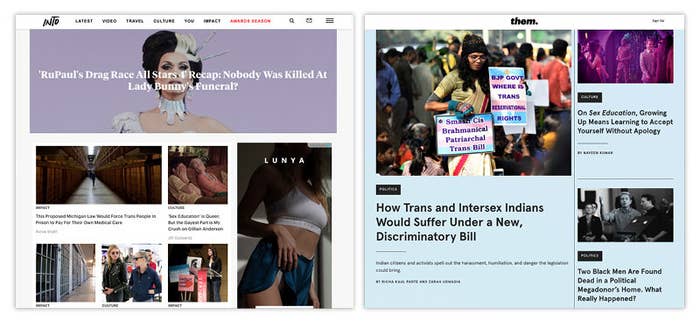
Just a few years ago, LGBT media was boasting a renaissance. Major outlets such as HuffPost, BuzzFeed News, and NBC News launched dedicated LGBT verticals (in 2011, 2013, and 2016, respectively), and print-first publications with massive circulations like Entertainment Weekly and the New York Times started covering LGBT topics more regularly.
But now, amid mass layoffs that have affected the media landscape at large, LGBT media finds itself in a state of flux. Two lauded sites (Grindr’s Into and Condé Nast’s Them, respectively), which were launched as alternatives to stodgier, more homogenous offerings, just saw their leaders leave after less than two years to reshape two of legacy gay media’s oldest titles. Meanwhile, digital sites with dedicated LGBT verticals are posting less and less content; as of 2017, HuffPost, for example, no longer has any staffer focusing full-time on LGBT coverage. As of just this morning, BuzzFeed laid off its Deputy LGBT Editor and LGBT Video Producer (the only openly trans staffer at BuzzFeed News), leaving just one remaining full-time U.S. staffer on the LGBT beat. Into isn’t producing any more editorial content at all, and all of Them’s founding editors have since left the publication (though a new executive editor, Whembley Sewell, was just announced).
And just like that, digital’s on the downturn and legacy media is the hot new ticket again — that is, for now. Anyone who has paid any attention for the last two decades — and particularly for the last five, when it’s garnered the most mainstream attention — could attest to just how frequently the shiny new title (or the newly relaunched old one) seems poised to finally save, or at least sustain, LGBT media.
But is LGBT media really sustainable after all? Now, we can read about ourselves in the Sunday Times and find an online community anywhere from Gay Twitter to Instagram meme account pages. At this point, do we really need to keep prostrating ourselves — proving that LGBT stories are not only valuable, but “safe” — to straight and cis-led corporations and advertisers who want to appear inclusive but not too inclusive? Do we want to be another business’s cool new vanity project until they get tired of us and pull the plug? And perhaps most importantly, are we getting too far away from the reason LGBT media was created in the first place?
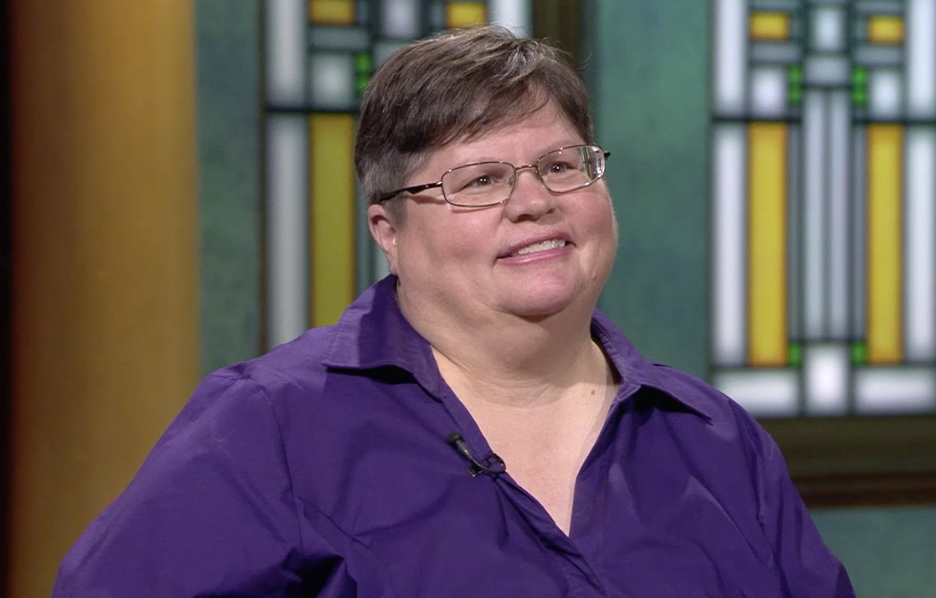
If there’s anyone who knows about the struggles of keeping LGBT media afloat, it’s Tracy Baim. The 56-year-old lesbian owner of Chicago’s LGBT newspaper, the Windy City Times, and publisher of the Chicago Reader alt-weekly has been working in LGBT media since her early twenties.
“My teachers in college … were quite paternalistic, saying, ‘You can't be openly gay and be a journalist,’” Baim told me. “So I did know my path was going to be strange.”
Baim edited and published the book Gay Press, Gay Power: The Growth of LGBT Community Newspapers in America in 2012, in which she explains the reasons why an LGBT press was first created. For one, the mainstream media spent decades either vilifying queer people or ignoring them entirely. Time’s infamous 1966 article “The Homosexual in America” dropped just three years before the Stonewall riots; the perpetuation of horrible, anti-gay stereotypes and falsehoods (like the viability of conversion therapy) did the kind of damage that extended beyond the week that story spent on newsstands. The only place LGBT people could refute and rebuke Time’s errors were in small subscription-based magazines like the Ladder, which had a very small circulation made up of a whisper network of lesbians who'd found out about the magazine and the organization responsible for publishing it, the Daughters of Bilitis.
The Ladder, One, and the Mattachine Review were among the first well-known gay and lesbian newsletters turned publications, but there were and have been so many others — even before the LGBT press effectively “came out” in the 1970s. For queer people in the postwar era, these secret pages — which included news and politics as well as fiction, poetry, and art — were vital to their selfhood.
The Advocate was first published as an organization newsletter in 1967, as a means to alert the Los Angeles–based LGBT community to events. Within two years, John D’Emilio notes in the forward to Gay Press: Gay Power, it became a nationally focused news magazine with “tens of thousands” of subscribers.
At the same time, local and regional publications began to pop up in major metropolitan areas: Philadelphia, New York, Chicago, Detroit, Boston, Washington, DC, and San Francisco among them. “All were labors of love and sacrifice,” D’Emilio writes. “Initially they depended on volunteer labor and on contributions to stay afloat.”
Advertising was difficult to find; bars were the primary LGBT businesses of the time, and they weren't always interested in identifying themselves as gay spaces. Even after Stonewall, police harassment was a huge concern.
But despite the likelihood of pushback, a brave few early publishers, editors, and reporters started using their real names in their bylines, which wasn't generally the case for pre-Stonewall publications like the Ladder. When Time published its more measured 1969 follow-up to its initial exposé — this one called “The Homosexual: Newly Visible, Newly Understood” — the LGBT press had long begun telling its own stories on its own terms.

Because LGBT press was largely born out of necessity and activism, the earliest stories were focused on the most important issues related to the community — and nothing was bigger than HIV/AIDS. New York's LGBT paper the New York Native (1980–1997) was the first to write about AIDS in May 1981, according to Gay Press, Gay Power. It wasn’t until that summer the New York Times, the LA Times, and the San Francisco Chronicle followed suit.
“AIDS forced news media to address the crisis both inside and outside the newsroom,” Gay Press, Gay Power notes. “... [A]nd although early reporting was often filled with homophobia, the media covered AIDS in better ways by the 1990s, even if most papers rarely covered it all.”
Eventually, AIDS spurred the mainstream press to put dedicated reporters on LGBT and HIV/AIDS beats. Slowly, other publications followed suit. HIV/AIDS coverage wasn't deemed as worthy of frontpage news, however, and other gay and lesbian coverage was typically “balanced” to include voices from anti-gay opposition.
Still, some still working in LGBT media refer to the ’90s as the “salad days.” As the LGBT movement pushed ahead, so did media coverage. Celebrities were inching out of the closet and landing salaciously sapphic Vanity Fair covers next to Cindy Crawford, or coming out on the cover of (where else?) Time. While “lesbian chic” was the hot trend palatable enough for straights, lesbians were launching their own magazines, like the nationally focused Deneuve (later renamed Curve) and the now-defunct Girlfriends. Queer women wanted the space to explore their own subculture apart from mainstream straight and LGBT press alike.
The mid- to late ’90s into the early aughts was also prosperous for niche media, with some brands like Absolut becoming major supporters in LGBT marketing. Other brands also saw potential in the LGBT market. Successful campaigns have included those from Subaru, which courted the lesbian community with Martina Navratilova in its targeted ads, and Miller Genuine Draft, whose “It’s about getting out” tagline brought it out of the closet in 1993.
“In the mid-’90s, it felt like this new age of advertising agencies creating really wonderful content that was very well thought out and placed deeply in the market in ways that created that loyalty factor,” said Baim. “And then it went away.”
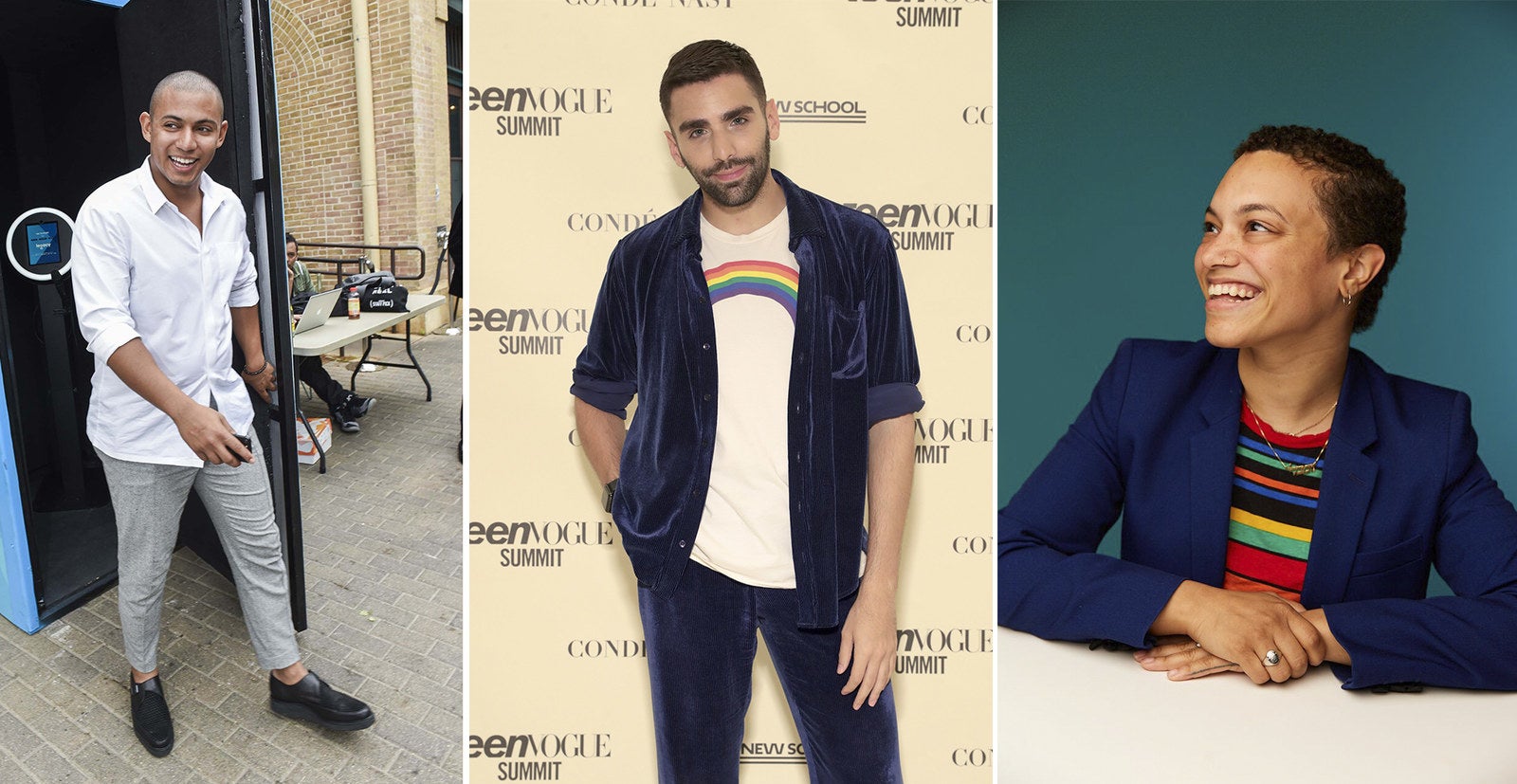
The LGBT community has always had a money issue. It feels a little gross to prove our buying power or spending value when a disproportionate number of LGBT community members, particularly in the trans community, lives in poverty. And yet for LGBT media, money is a necessary evil.
In July 2017, Grindr launched Into (I came on as managing editor in November 2017), and shortly after, Condé Nast announced the beginnings of its own LGBT outlet, Them. Both of these spaces signaled the latest iteration of new, younger, “cooler” alternatives to legacy gay media, like the Advocate, the longest-running national LGBT news and politics magazine run out of Los Angeles, and Out, the Advocate's younger, flashier, more fashion-forward sister. Despite the frequent attempts made by these publications to diversify their staff, their coverage, and their readership, they have been criticized for putting a lot of straight white guys on their covers and a lot of gay white guys on their mastheads.
Into and Them were often referred to as “millennial” sites, which likely had to do with the millennials put in charge. But barely a year after launching their new publications, the young cis gay men in charge of those digital properties left their positions to head up the grandfathers of LGBT media.
In 2017, Out and the Advocate came under new ownership. Adam Levin and Maxx Abramowitz of Oreva Capital (the straight white men who also own High Times) purchased the properties and hired the openly gay Nathan Coyle as CEO. Coyle then brought in new editorial leadership: Zach Stafford left Into shortly before the sitewide layoffs to helm the Advocate, while Them’s founder and creative director Phillip Picardi recently jumped ship to lead Out. Stafford is the first black editor to oversee the Advocate in that magazine’s history.
“I decided to leave Condé because revenue was so much a part of the story for me and my role that I wasn't able to, I guess, fully oversee editorial in the way that I wanted to be immersed in editorial,” Picardi told me. He’d spent several years working for and being synonymous with the brand, largely due to his work at the digital version of Teen Vogue. He was often referred to as an Anna Wintour protégé; the Anne Hathaway to her Meryl Streep.
Still, post-Picardi, Them is forging ahead. Sewell, Them’s new executive editor, previously channel manager at Teen Vogue, mentioned the unveiling of “new projects in the coming months.” She added, per a Condé Nast spokesperson, that “our coverage will continue to reflect our commitment to representing the breadth of our community.”
The spokesperson said that it’s important to “Condé Nast as a company to provide a platform for new voices and perspectives, and to chronicle and celebrate their stories. From both an audience and a business standpoint, we've seen consistent growth since launch.”
“Consistent growth” isn’t something you hear often in LGBT media these days. Most regional, local, and national digital LGBT publications are available for free; they're sustained by advertising, sponsored content (“sponcon”), branded merchandise, and/or special events. Those who have a subscription-based model, such as the Advocate and Out, have never reached more than 1 million subscriptions in their lifetimes. (Pride Media currently cites an estimated circulation of 711,000 print readership, and that’s including all of their titles, not just the Advocate and Out but also their HIV-focused Plus, and their urban millennial magazine Chill.)
But just like with the presence of brands, politicians, and other adopters at Pride marches, the relationship between companies and the community can be complicated. LGBT media was born out of a necessity for information sharing and accountability; now, placing an ad for just any corporation who suddenly finds value in our specific spaces should come with a lot of other considerations.
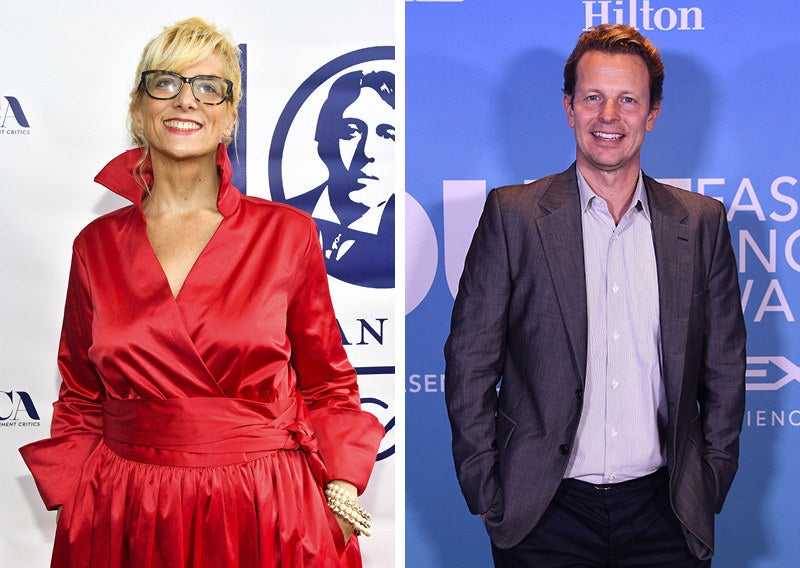
“We're advocacy publications by and large — we’re not just sitting back without our opinions,” said Diane Anderson-Minshall, editorial director of the Advocate, Chill, and Plus magazines. “It’s evident in our editorial and our choices, so what goes along with that is who we support, who we don't support, who we take money from.”
Nathan Coyle says he believes advertising is more of a concern for the Advocate, which is more news and politically focused, than Out, which has a history of being more lifestyle, fashion, and entertainment-driven.
“It’s less of a concern, which is not to say that under Phillip [Picardi]’s leadership in particular we're not going to take on more challenging topics — and we most certainly will — but generally speaking, the topics and the areas of the kind of editorial coverage of Out are much less likely to be polarizing to advertisers,” Coyle said. “I think there are cases where advertisers might be uncomfortable [advertising in the Advocate], but that’s great because then we'll sell them Out and we'll sell them Pride.com. And then everybody’s happy!”
Pride Media is the largest entity in this space, but it doesn’t exactly have a monopoly — at least not yet. And that's a good thing, Baim argues.
“You must have more than one of something to prove its value,” she said. “When you're in a niche market … you need colleagues in at least other cities to have a network of publications or media entities that advertisers even find worthwhile creating the content for. We are at a sharp, sharp tipping point in LGBT media.”
Baim finds that one of the biggest problems facing publishers today is the shift to programmatic marketing. Whereas brands used to work more closely with LGBT people at their respective publications to create highly specific artwork to go inside magazines, on back covers, or online, now advertisers (and some media companies themselves) look for an easier alternative. Programmatic ads involve being targeted for specific ads because of sites you visit, searches you make, and people you follow.
“[Ad agencies] used to build a creative, take a commission, and all of that money went to LGBT media,” Baim said. “Almost all of that now goes to ‘Oh, we'll run your Facebook campaign targeting those people, we’ll run your Twitter campaign, we’ll do content that gets placed.’ Why not? It’s all in-house then — they control all the money.” (This shift doesn’t hurt only players in LGBT media, but potentially LGBT consumers as well — a visit to a gay-themed site can lead to programmatic gay ads following you around the internet, which can be dangerous for those who aren’t openly queer.)
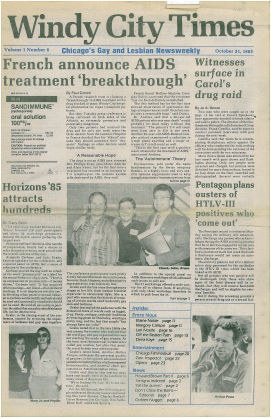
But media outlets, LGBT and otherwise, are still trying to make it work. A rise of online-only outlets (like Towleroad and Queerty) launched in the mid-2000s with a lower amount of overhead than their predecessors. Meanwhile, more progressive mainstream publications saw an opportunity for audience growth and pitched themselves as more inclusive — as soon as there was more public support for LGBT rights, of course. These publications dazzled advertisers with LGBT-focused verticals and Pride-themed, rainbowfied editorials in search of suddenly desirable pink dollars. Independently owned and operated outlets, which had long fought to convince advertisers that queer people — including, yes, lesbians — spend money, too, found themselves competing for ad dollars with mightier publishers, leading some outlets particularly strapped for cash to close their doors.
Baim’s Windy City Times is one of fewer than 20 local LGBT publications still in existence. The Times is part of the National LGBT Media Association, a network of the top 12 regional gay papers in major markets, who work with Rivendell Media, the only LGBT-focused media placement, planning, and research company that currently represents more than 95% of existing LGBT press. Every year, Baim said, the association gives 5% of its national advertising booking to a pool, which gets spent on advertisements in Ad Age or other industry marketing to promote its reach of loyal local LGBT audiences. The network is a way of ensuring the success of all local and national LGBT media, because local publications like the Windy City Times also rely on national campaigns as much as they do local advertisements.
“We saw a significant decline last year in advertising from national,” Baim said. “I don’t know how it is in the national publications, but there’s definitely been a decline over the last year. I think it's TV and programmatic, absolutely.”
But not everyone thinks the prospects are quite so dire. “Publishers successful in niche media — we’ve only had a 6% hit in advertising,” Anderson-Minshall said. “The top 50 magazine advertisers only spent 6% less in 2017 than [the] previous year. Yes, advertising revenue is down, but it's not down that much. … Traditional advertising revenue isn’t going to jump up any time in the future and may not be a part of the plan.”
“Now we have a push to a digital world, and it’s really still a print-based market, meaning even most digital sites are extensions from the print product,” said Todd Evans, who runs Rivendell Media, an LGBT media placement and advertising agency. “And so [we’ve seen] three years of very strong growth in print, and it’s totally counteractive to what everybody else is saying.”
Other minority media like black and Latinx publications have been more successful with moving not just to digital but to mobile; but they traditionally have larger magazine circulations, like Ebony (750,000 subscribers) or People en Español (508,156 subscribers).
Both the black and Latinx markets have been successful with television networks too, like BET (in more than 91 million homes) and Telemundo (in 182,330,440 American homes). A television ad comes with a much heftier price tag than one for print or digital or social; it can cost anywhere from $200,000 to $600,000 to place one 30-second ad on television as opposed to $50 to $150,000 for a sizable print or digital ad. LGBT-focused platforms have not seen that same success, however, despite channels like Viacom's LGBT-focused Logo TV, which birthed RuPaul’s Drag Race. (It has since relocated to VH1 in an effort to broaden the show’s reach — as of 2015, only 51,337,000 homes even had Logo.)
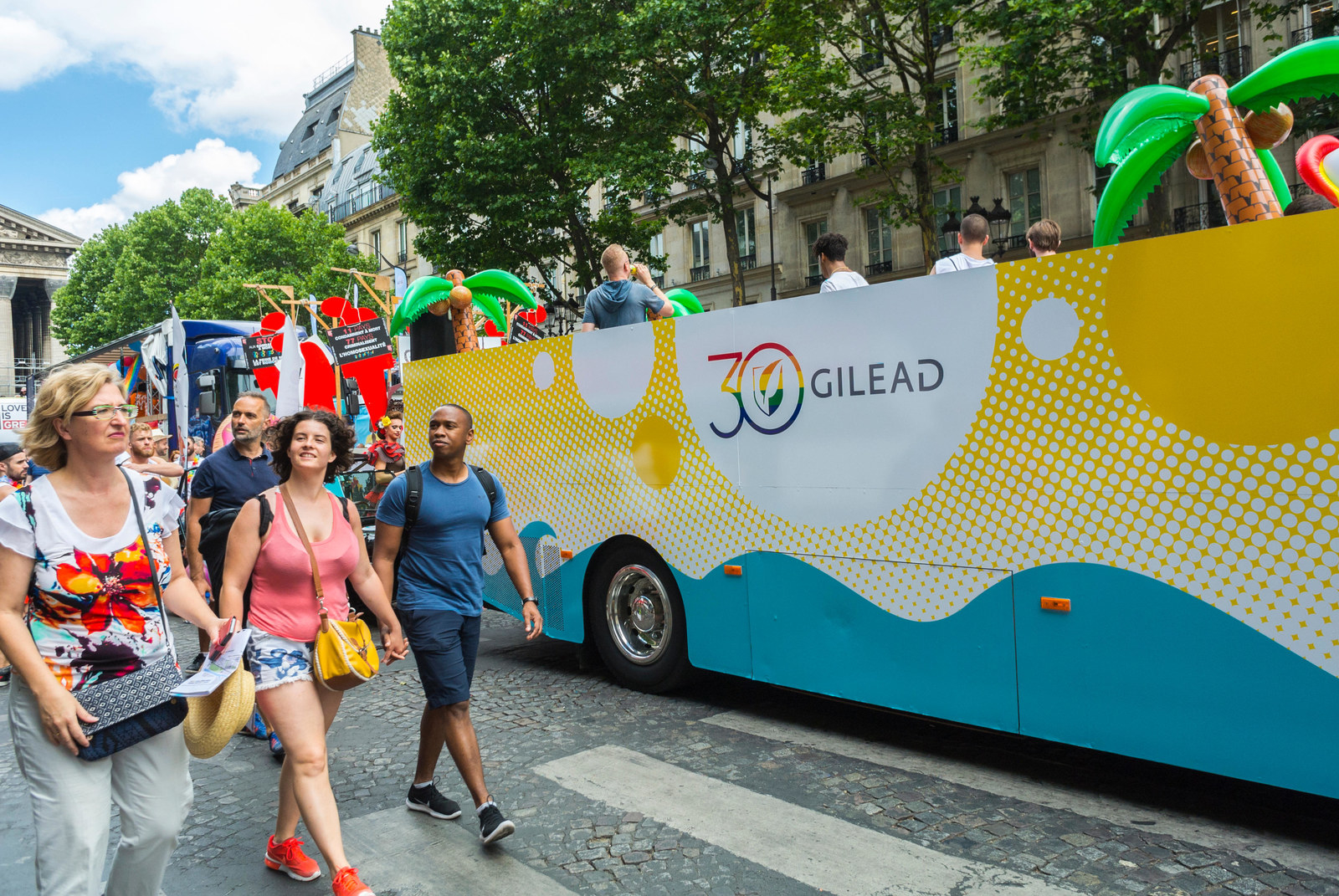
Since most advertising dollars aren’t in the digital space, and some LGBT publications and verticals have no print or television products to sell combo deals, what’s a digital-only site to do? Some have tried, yep, pivoting to video.
It’s a strategy that a number of struggling sites — from Mic to Mashable to the Daily Dot — have attempted over the past few years, laying off editorial staff so that they could beef up their video offerings.
But videos cost money, and higher production costs don’t always ensure bigger audiences or higher revenue. Last October, Facebook was sued by aggrieved advertisers for inflating the viewership numbers of their videos for years after hundreds of journalists had lost their jobs. A breathtaking amount of internet traffic is faked. But still, the lure of video remains — it does for Grindr, who cited a video pivot when they laid me off along with my Into colleagues. And it does for Pride Media.
Coyle said video will play a “key part” in expanding and growing Pride Media's revenue. He's also considering some other opportunities like those he leveraged at his last publication, Domino, where he created a line of “Domino-designed and -branded tabletops at Bloomingdales, Anthropologie, and a handful of other retailers.”
"The examples here would be quite different," he said. "I think that I agree there have been challenges in monetizing LGBT media over the years and even decades, but I think that when you think about how to create businesses and revenue streams beyond just advertiser's dollars, I think there's a huge, huge potential."
Publishers have certainly been scrambling to find revenue streams beyond advertisers’ dollars — and with good reason. One major get for any LGBT entity is Big Pharma, specifically HIV drugs. It’s seemingly an ideal match — ads for Truvada for PrEP would a the segment of the population for whom HIV/AIDS prevention is particularly needed. Yet depending on consistent cash flow from a gigantic company can create dire and desperate circumstances when they suddenly pull out of LGBT publications — as was the case recently with Gilead, the biopharmaceutical company that not only owns Truvada, but the exclusive patent on emtricitabine, an integral part of Truvada which would be required for any more generic or less expensive replication of the HIV-preventative drug.
While Gilead had major buys with Into, Them, and almost every national and local LGBT publication, it suddenly halted its support last year. Evans said Gilead hasn't advertised in any LGBT publication since May 2018, shortly after a new CEO came on board. Instead, it’s moved toward television and mainstream media.
"We track every ad in every gay and lesbian publication in the United States, and that's something disturbing and uncomfortable for me, when a company is largely wanting to target an LGBT clientele for a product or service and then they want to do it through mainstream media — how does that really help our community?" Evans said. “Pretty much the whole of the LGBT press — including the Out and the Advocate, subscriber based ones — they're depending on that income to fund stories and research and help with equal rights for LGBT Americans, so I really feel it's a misstep."
"It's very clear Gilead is doing a pivot," Baim said. "It's very clear and it's definitely hurting LGBT media. LGBT media are suffering — I know it. … You're seeing [Gilead] on CNN and FX and other places. Pharmaceutical has always been one of the stronger categories, and I've always really pressured for diversification of relying on that category for decades.” Still, she said, it’s hard not to feel lured by “the shiny larger buckets of money."
Coyle isn't concerned about losing Gilead specifically. "We have great relationships with a number of pharmaceutical advertisers," he said.
Representatives for Gilead did not respond to a request for comment.
LGBT media has, like every other American institution, a long history of sexism, racism, and ageism that’s changing at a glacial pace. Just like most national LGBT nonprofits, most of the publishers and editors of LGBT publications past and present have been helmed by white cisgender people – most of them gay men.
Tre'vell Anderson recently left the Los Angeles Times for a director of culture and entertainment position at Out. A black, genderqueer journalist who serves as the president of the LA chapter for the National Association of Black Journalists, Anderson said they generally fail to see "as robust coverage of the community as I wanted" in LGBT media.
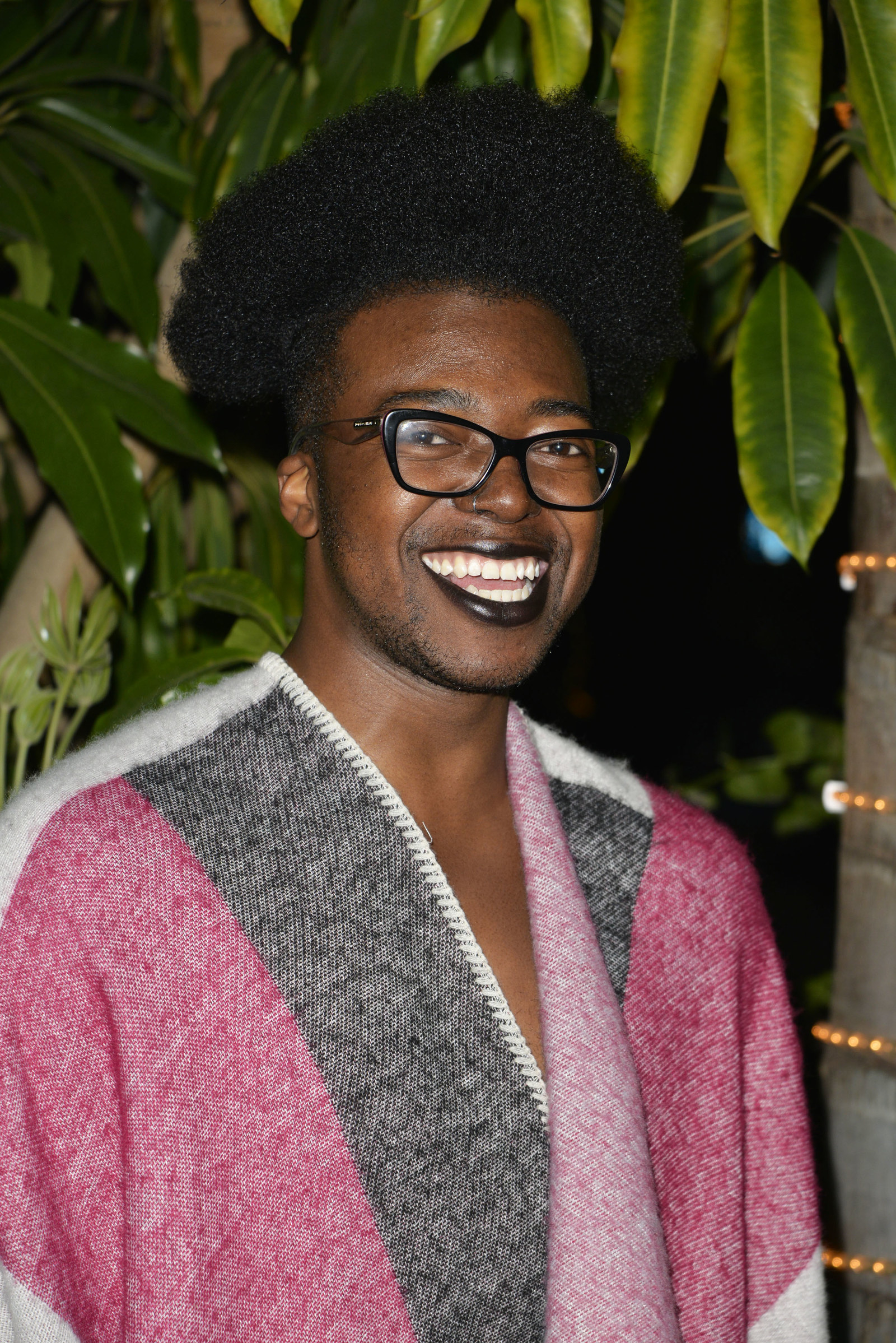
"So much of what I personally saw in even Out and the Advocate ... was a centering of stories that didn't include bodies like mine and experiences like mine," Anderson said. "And that's not to say they weren't doing a great job at covering what they were covering; they just weren't covering some of the things I thought should be covered.”
Anderson's new coworkers include managing editor Michelle Garcia, executive editor Raquel Willis, and former Into staff writer Mathew Rodriguez, a team Nathan Coyle is proud to employ, because he says they do not mirror Out's largely white cis male past.
“I think the state of LGBT media now — yes, you still have those sites that are very much bloggy and low-brow, if you will, in terms of the kinds of content that they're covering,” Anderson said, “but you also see a lot of queer media that is trying to have this deep reporting, robust coverage of the entire queer community, and not just cis white men."
"Diversity and inclusion is a huge priority for me and for the company, and what I'm really proud to be able to point to is actions and not words," Coyle said, referencing criticism that Out, in particular, faced when it came to diversity in the past. Now, he said with a laugh, “With only one exception, Phillip is the only non-Latino white cis male on the entire Out team."
When asked if he sees his being hired at Out as part of a long-held trend of keeping cis gay white men in charge of the publication, Picardi said in an email, "I’d resist the notion that this is a 'continuation’ of what’s happened before, since the staff is currently the most diverse in Out’s history, and that was a clear priority of mine before accepting the job, and has been a priority for me in my (albeit, short) career as a hiring manager. But, I would add the big ‘but,’ that gay white men are often chosen for these jobs because we remain the closest in our proximity to privilege. We are likely chosen for roles and promotions and granted visibility due in no small part to this privilege and, perhaps, a sense of palatability by the broader world outside of the LGBTQ+ community. I am not shy about acknowledging privilege as a part of the reason I’ve held multiple positions in my career."
Meredith Talusan was initially the executive editor at Them under Picardi, but has since moved to contributing editor, largely consulting on "longform pieces and topline work that would benefit from my areas of expertise." She said she sees a movement at publications for not just cis white gay men to be in charge, but believes Picardi is an effective leader because he elevates QPOC voices.
"I feel like Phill's model is really the only one that could be sustainable in terms of a gay white man leading a broad queer publication, unless it's one that appeals to a really old demographic," she said in an email. Though appealing to mostly an older demographic is exactly the problem legacy publications continue to have.
"I think Out is another brand that historically has a certain perception of the types of people, the types of bodies, the types of stories they've come to expect, and I think the team we have now is trying to buck up against that," Anderson said. "And I specifically am trying to buck up against that. And for me, I often say we are having to train our audience to being open to other types of coverage."
That won’t happen overnight. Anderson said there was some backlash when Out unveiled their first new cover under Picardi's tutelage, featuring actors Hari Nef and Tommy Dorfman.
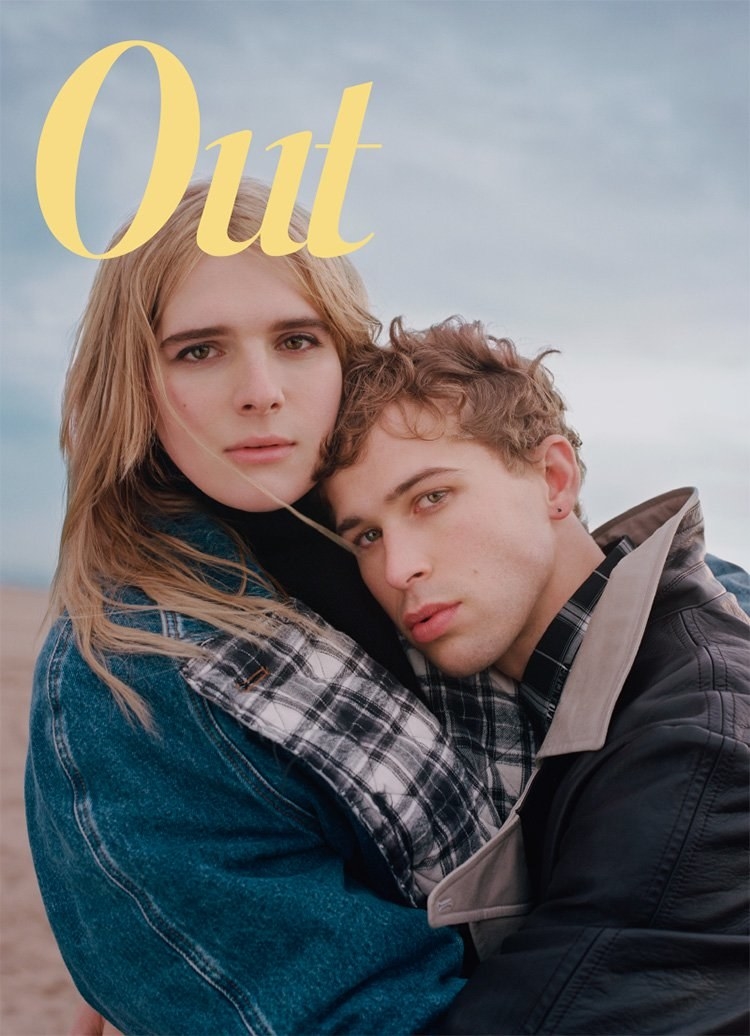
"We did get some interesting feedback on the cover of our first issue — our February issue which is our Hollywood issue ... which has a trans woman and a cis gay guy on it, but they're both white," he said. "So many people think this new era of Out would include racial diversity on the cover, and so we had some negative feedback about that. Some people were like, 'The face is still white!', which I think is a valid criticism of the entity that is Out magazine."
"The entire media industry has been victim to only creating space for mostly cis-white [sic] folks. And as a black person who now is an EIC of a legacy publication, I am excited to see what we can do together as I settle into my role (now on Day 9) and the new Out staff does the same," Stafford said in an email.
"Male privilege is alive and well in all communities, whether it's straight or the LGBT community," said Rocco Kayiatos, the copublisher and founder of Original Plumbing: A Trans Quarterly. Kayiatos and I also worked together at Into, where he was the head of video; he previously worked at BuzzFeed. A trans man who began his career as a music artist, he was first inspired to launch his own trans male–focused publication with copublisher Amos Mac because he felt media was either ignoring or tokenizing trans men like him — LGBT media included.
"I think that when we talk about how there's a new face to queer media, to me it looks the same," he said. "And until we start putting women and trans people and women and trans people of color in positions of editor-in-chief, ... it's not enough to hire a young, white, or more normative kind of gay man to then hire a staff of people of color or trans people. It's not enough to do that. We need to put POC and trans people in positions of actual power.”
Original Plumbing is currently in its last printing after 10 years and 20 issues, and Kayiatos said things still haven't gotten much better for trans men or transmasculine people when it comes to being hired or covered by LGBT media outlets. Although Original Plumbing created merch and threw successful events to help offset printing costs, the copublishers are still in the red. Its advertising base was largely small queer-owned businesses and sex toy shops.
"We looked to Autostraddle to figure out how to try and expand but it was always just the two of us," Kayiatos said.
Autostraddle, the largest and most popular surviving independent media site for lesbians and bisexual women — also celebrating its 10th anniversary this year — is figuring out its future, too. Despite Autostraddle’s faithful following and revenue increase every year, its founder and editor-in-chief Riese Bernard is considering something that could surprise some loyal readers: acquisition.
Independently owned, operated, and staffed by queer women, Autostraddle has been able to survive due to subscriber-paid memberships, private donors, events like its annual A Camp, and the small amount of advertising it is able to procure. Recently, Autostraddle became an affiliate of Pride Media's, in hopes of benefiting them both financially. (Autostraddle previously had a similar deal with Evolve Media and AfterEllen.) Currently, Autostraddle isn’t going beyond advertising partnerships, but Bernard said that could change.
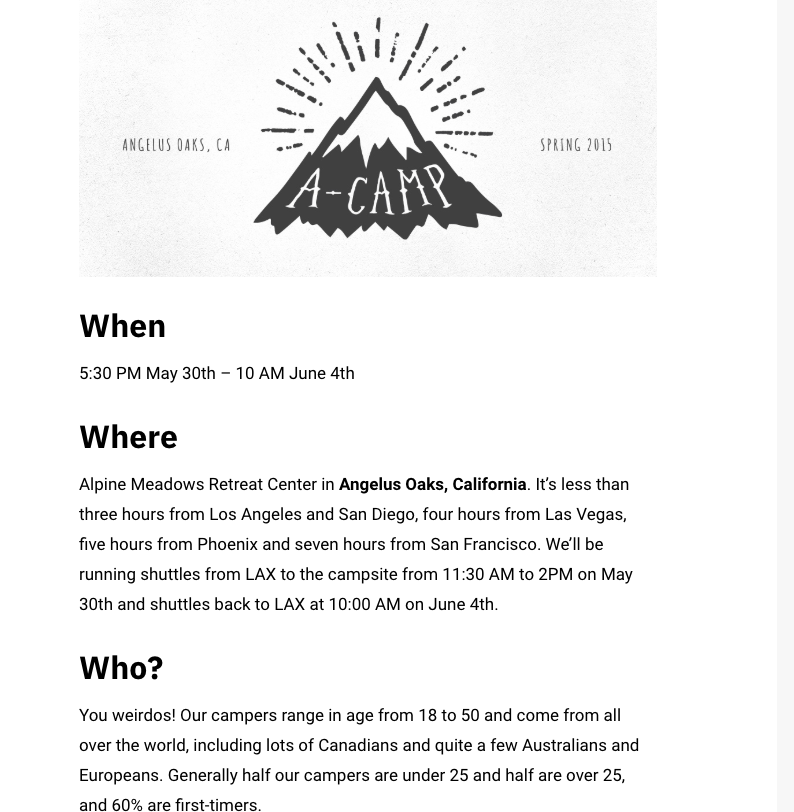
"Whenever we've talked about the possibility of acquisition, I've always been pretty firm that I wouldn't do anything that would require me to give up any editorial control or anything of that nature," Bernard said. "I don't really know that much about what [acquisition] relationships are like. I don't imagine that anybody on our team, including me, would be happy about sugarcoating things or not being honest about stuff. Honesty and authenticity is really crucial to our brand — to our lives and what we care about and believe in. So I don't think anything where we'd have to sacrifice any of that would work for us."
Lesbian and queer women's media has particularly struggled when it comes to revenue, in part because lesbians are stereotyped as frumpy shut-ins who don’t care about nightlife or fashion — unlike their glamorous male counterparts — which can dissuade advertisers. Curve is the only national lesbian publication still available in print and it only recently came under representation by Evans and Rivendell.
"The lesbian market the truly untapped market in the United States," Evans said. "We don't really know why that is — I've invested so much in it because I just feel this obligation to try and help that market. I think it really still suffers from prejudice."
Bernard says a decade of time spent working with and for her community has provided her tons of statistics that would prove wrong anyone who didn't see lesbians and other queer women as an important market force. But she says one benefit to others’ shortsightedness has been not having to forgo any editorial independence.
"Because no one wanted to advertise with us or give us access to anything, we did have the freedom to say what we wanted," she said. "But I think that just on a day-to-day, our existence feels so precarious that there are things we still worry about saying anyway."
A continuous struggle for any queer publication is content about sex and sexuality — and that has affected Autostraddle in the most unfortunate ways.
"When we've been in ad networks like Google AdSense we've had to block and set up plug-ins, so they don't run in pretty much half of our content because they don't want to be anywhere near sex," Bernard said. "It's incredibly frustrating to be rejected for ads because of our content being too sexual and having too much sex in it, and meanwhile Cosmo can do whatever and get huge ad sales from big brands. They can even write about queer sex, and their lesbian sex articles have overtaken ours in SEO results a lot of the time."
If acquisition doesn't come to fruition, Bernard doesn't know what could happen for her site, which employs six full-time staffers.
"If we don't get that support and we do have to shut down, aside from my own personal investment in it, which is obviously pretty large — that's a little scary in terms of there not really being a lot of women-focused LGBT media out there," she said. "It's important to have publications that are also led at the very top by women. People will be like, 'These other publications should have more stuff about women or include more women,' and that's true, but also I think it's important to have things that are led by women, too, where it's really devoted to us so we're not just a vertical or a percentage of a staff. That we are the ones controlling the whole thing."
Since LGBT media’s early days, lesbians and queer women have had to effectively become separatists. The lesbian feminist press has seen many variations on collectives, newsletters, and publications, but very few have permeated the landscape like AfterEllen and Autostraddle. (When what is now owned by Oreva under the Pride Media banner was previously with Here Media, the Advocate, and Out had a sister site called SheWired that was later shut down due to lack of profit and spun into the millennial site Pride.com. SheWired editor Tracy Gilchrist was christened with the title feminism editor at the Advocate, and now women's content is filtered into the "women's channel" on the Advocate's website.)
When I first started at AfterEllen in 2006, I was a freelancer and there were four full-time staff members, all women editors. The site was founded in 2002 by Sarah Warn, who eventually sold the site to Viacom when they launched Logo as its LGBT umbrella; AE was its lesbian arm. I came on full-time in 2007 and within the next three years, we were down to two full-time editors, with no plans to backfill. When Evolve Media bought AfterEllen in 2014, I became editor-in-chief and more involved with speaking to the (straight) sales team about how to market to and for the lesbian community. I put together a slideshow presentation for the international team, highlighting the kinds of things that queer women enjoy consuming, who our writers are, who our readers are, and what they want. And yet we rarely got big buys, save for an NBC deal that saturated our site with content promoting its short-lived "lesbian" comedy One Big Happy. After one year, Evolve let go of my assistant editor, Dana Piccoli, and eventually told me they'd no longer employ anyone full-time and would instead re-up old content and supplement with an occasional freelancer.
But the company underestimated the enthusiasm of our readership, and the dedicated audience of queer women (many of whom also read Autostraddle) shared their immense displeasure in the choices made by the straight white men running the show. In an effort to keep lesbians happy, Evolve put a part-time editor in place who has noticeably changed the tone of the site; she employs a vehemently trans-exclusionary ideology. In fact, AfterEllen’s new writers have gone out of their way to alienate trans women in what they believe is a reclamation of lesbian space and power ― so much so that several other queer women's publications from around the world have signed an open letter sharing their support of trans women in their spaces. AfterEllen’s current editor, Memoree Joelle, did not respond to a request for comment.
AfterEllen is no longer what it once was for many queer women, but even before Evolve decided to devote fewer resources to the site, AfterEllen’s demise brings up another major question when it comes to LGBT media: Are queer people able to sustain publications on our own, or do we need to rely on broader audiences?
Some LGBT-specific verticals hope to reach both more general (read: straight) audiences as well as LGBT readers. NBC Out’s editorial manager Brooke Sopelsa says that the NBC name helps her journalists to gain access and makes their jobs easier based on the respect the news network has garnered over the years, but that her readership is not just LGBT people.
"The way we approach NBC Out coverage is with a 'By us, for everyone' strategy. Meaning, like many other LGBT news outlets, our content is being written and edited by journalists with deep knowledge of the queer community," Soplesa said. "However, unlike many other LGBT outlets ― and partly due to NBC Out being part of a larger mainstream news site ― our audience goes far beyond lesbian, gay, bisexual, transgender, and queer readers. We strive to cover stories in a way that makes them of interest and accessible to folks both within and outside the queer community."
There is value to that kind of work: People who might not be very well-versed in queer issues can, through LGBT verticals or LGBT content included in mainstream media, learn about the humanity of LGBT people and the value in supporting LGBT rights. Plus, LGBT readers can find themselves included and represented in mainstream settings where in the past they might have not been.
But that strategy is also a marked change from what the founders of the first LGBT newspapers or newsletters set out to do. And that begs the question: Who and what are LGBT media outlets doing all this for? And at what potential price?
In five, ten, twenty years, will we all still be watching videos and reading articles with pre-programmed ads based on our search history? Will any content still get produced with only with us in mind? Who will be creating it? And will anyone care?
Journalism itself isn't an entirely stable industry — Ad Age called 2018 the year of “Digital Media’s Great Upheaval” — and being a minority within that realm makes it even less of a desirable career choice. But that's only if you see it as a choice.
"We all had to be out there. You couldn't really be underground and be in the media," Anderson-Minshall remembers of her early days in LGBT press. "We knew it because when our reporters would get physically attacked back in the day or we would all get death threats, stuff like that. It felt like a mission and a calling and not a job, which is why we're all willing to do it for twelve dollars."
"We're all kind of poor and stressed out," Bernard says of her team at Autostraddle. "We survive on — we love the work we do and we love our community and we love the stories that we write and we love having the chance to really elevate the stories we think need to be elevated and to have a voice in the cultural conversation, and we really love each other. A lot of our team is like family to us. Most of my coworkers are like my best friends. So there are times where we feel like 'Oh my god, I can't believe we're getting paid anything to do this.'"
"I firmly believe that niche media is necessary," says Anderson. "It's a necessary check and balance on the mainstream media whose newsrooms don't look like many of these queer offices .... so many people on our team are trans and queer and folks of color, and I can definitely say that wasn't the case for years in Out's past. … All of media needs to do a better job of creating more diverse voices and allowing those people to speak about their communities, and to speak to communities that they don't belong to."
Perhaps the question of what’s next for LGBT media has less to do with those within it than those outside of it — LGBT readers and consumers. What value does our community place on content by and for queer audiences? After all, we're the only ones who can keep ourselves alive. ●
Trish Bendix is a writer and editor living in Los Angeles.
CORRECTION
Meredith Talusan was the executive editor at them. A previous version of this post misstated her position.
